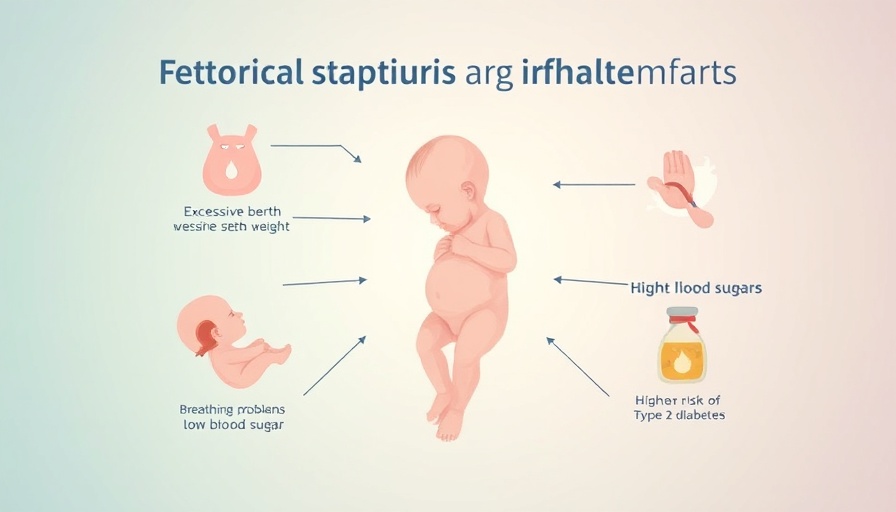
Understanding PTSD: A Hidden Struggle for Women Veterans
Post-Traumatic Stress Disorder (PTSD) significantly impacts those who've served in the military, particularly women veterans. Statistics reveal that about 13% of female veterans are diagnosed with this mental health condition, compared to seven out of every 100 male veterans. This statistic underscores a pressing need to address the unique challenges faced by these women. Most know PTSD for its haunting symptoms like flashbacks and nightmares, but few realize the far-reaching implications it has, especially during pregnancy.
In 'The Link Between PTSD and Gestational Diabetes,' the discussion unfolds critical insights into how PTSD elevates risks for women veterans, prompting our deeper analysis of this vital health issue.
The Link Between PTSD and Gestational Diabetes
Women veterans grappling with PTSD face an increased risk of gestational diabetes during pregnancy—a condition that elevates blood sugar levels, potentially complicating both maternal and child health. Research surprisingly shows that PTSD can interfere with metabolic functions, which in turn raises the likelihood of developing gestational diabetes. Additionally, a history of depression, which is notably common among these women, further heightens this risk. In fact, studies indicate that more than one in four surveyed women veterans reported experiencing elevated levels of depression. This cross-link presents a pressing concern about the overall health trajectory of women veterans.
The Maternal Impact: Consequences of Gestational Diabetes
Gestational diabetes is not just another pregnancy complication; it can trigger a series of challenges for both the mother and the baby. Excessive birth weight, the need for C-sections, and increased risks of long-term health issues like type 2 diabetes and obesity for the child are all potential outcomes. For mothers, gestational diabetes may not only mean additional health risks during and after pregnancy, but it can also lead to postpartum depression. This cyclical relationship between mental health conditions and physical outcomes creates a distressing pattern that requires immediate attention and intervention.
Steps to Manage Risks
If you are a service woman with PTSD and find yourself pregnant, it's crucial to have open communication with your healthcare professional about managing these risks. They can devise coping strategies and refer you to relevant resources, supporting you through mental health challenges. Establishing a comprehensive care routine can help mitigate some risks, allowing a smoother, healthier journey into motherhood.
Taking Charge of Your Health
Embracing a well-rounded lifestyle becomes critical. This might include stress-relief techniques, balanced nutrition, and physical activity that promotes well-being for both mother and baby. Understanding and addressing the special considerations related to PTSD and gestational diabetes is vital for self-advocacy and positively influences outcomes for both you and your child.
Being informed empowers you to make choices that can significantly impact your health journey. The overwhelming connection between PTSD and gestational diabetes signifies the need for more robust support and resources tailored specifically for service women. By being proactive about mental health, women veterans can better tackle expected challenges as well as unexpected surprises that come with motherhood.
 Add Row
Add Row  Add
Add 




Write A Comment